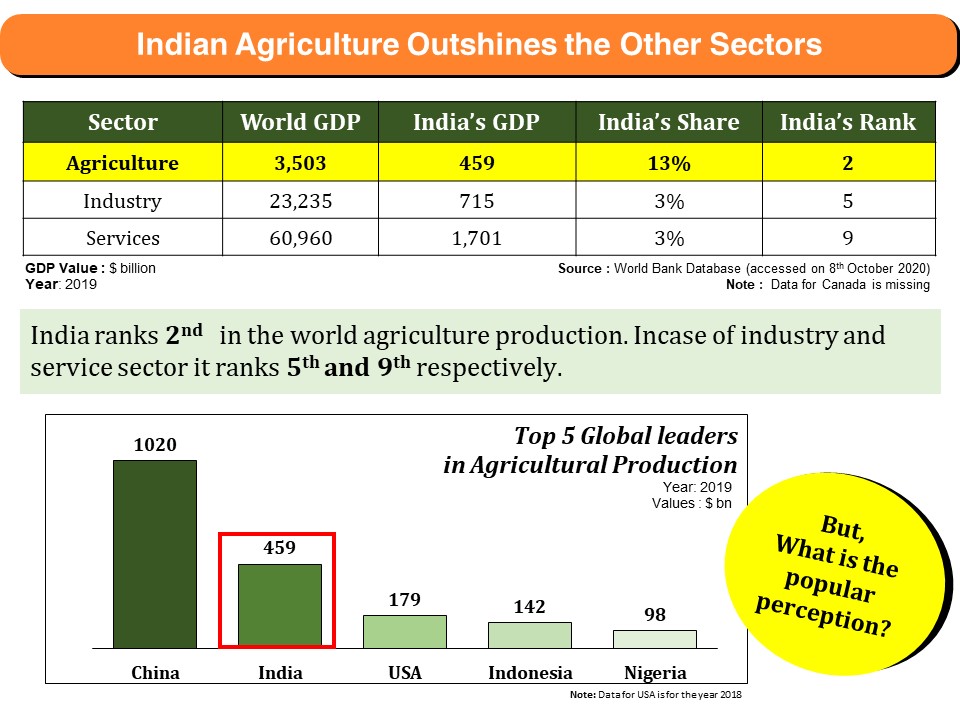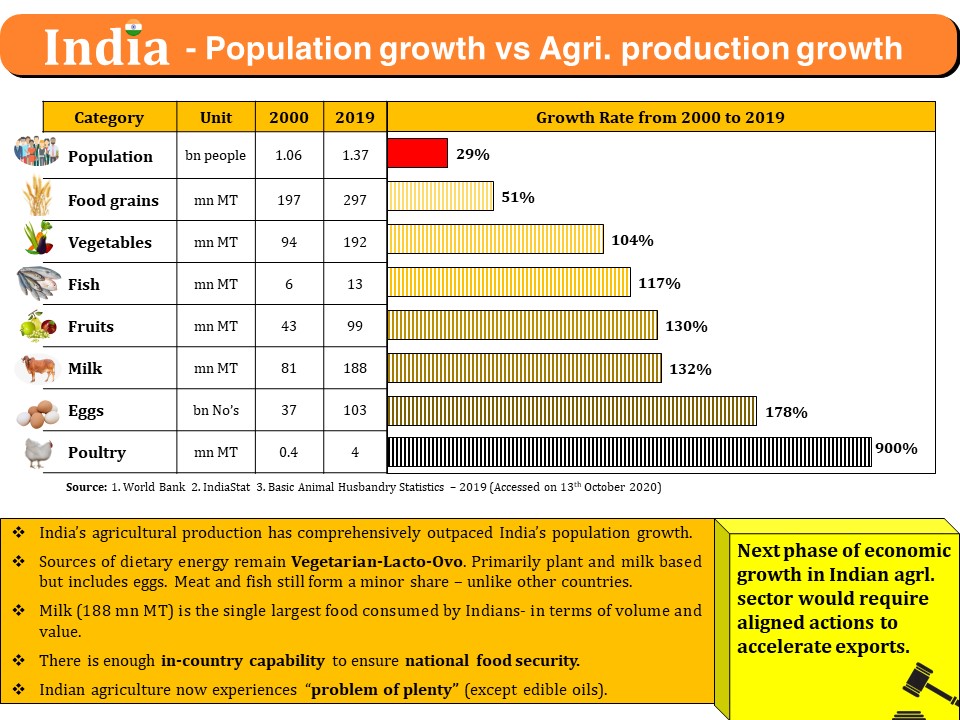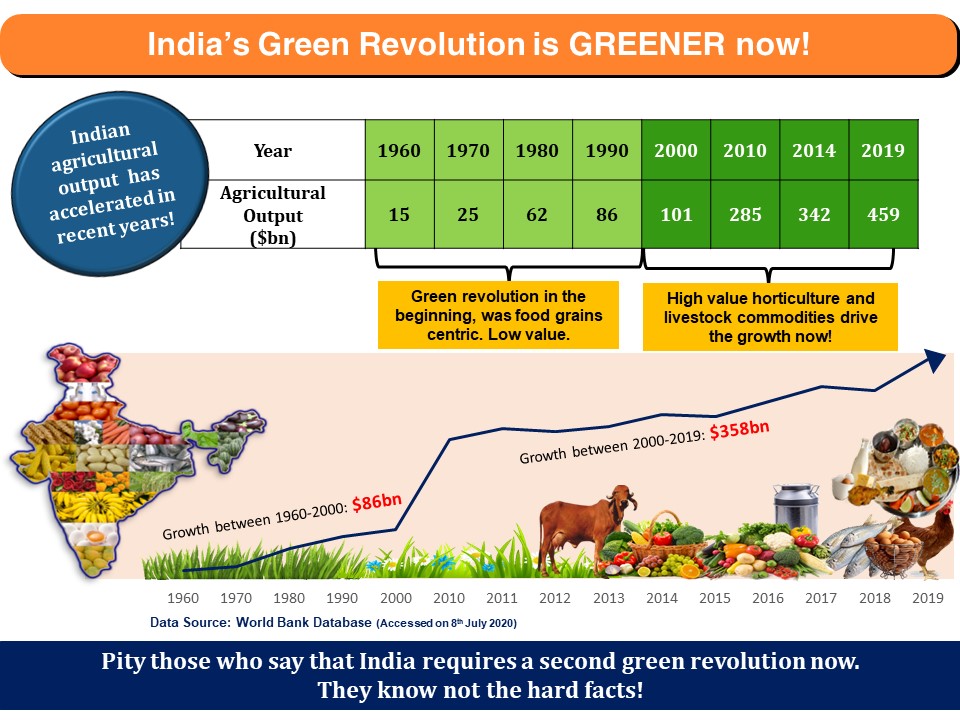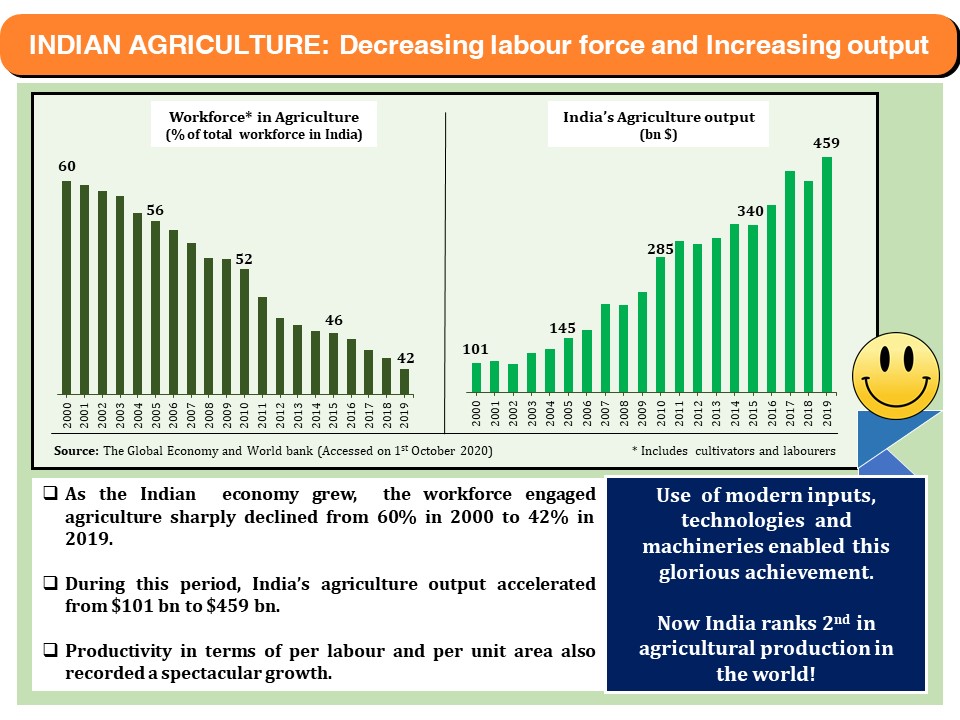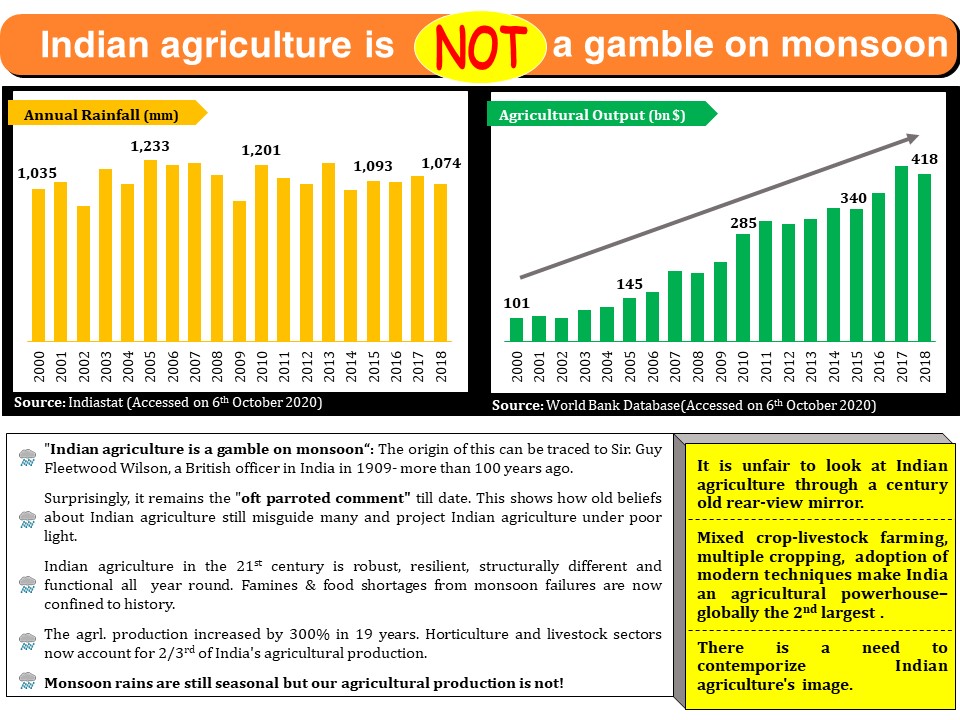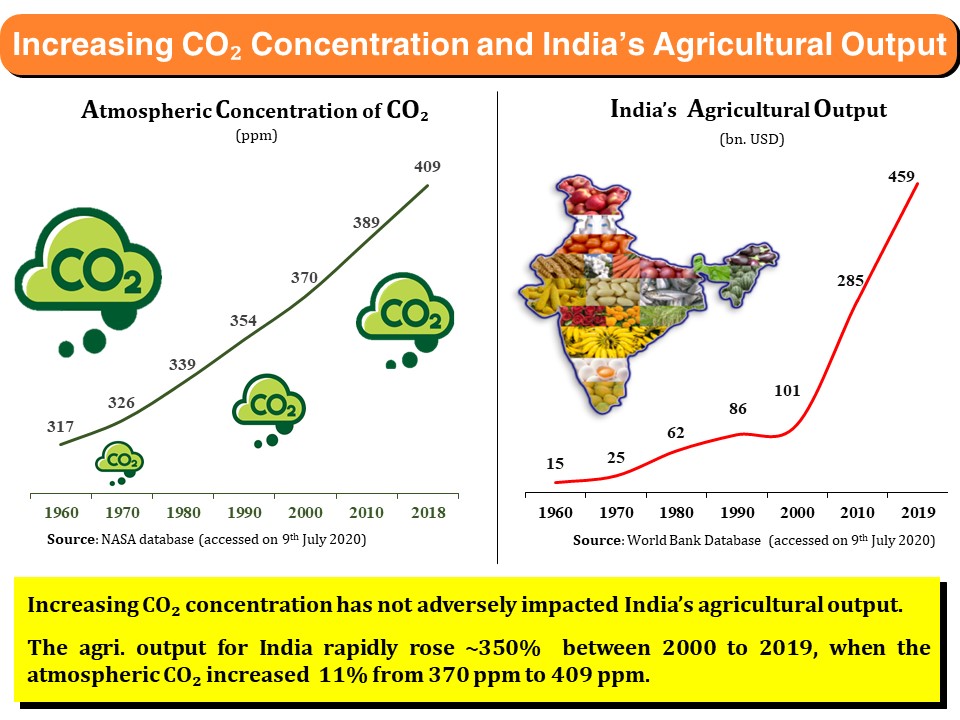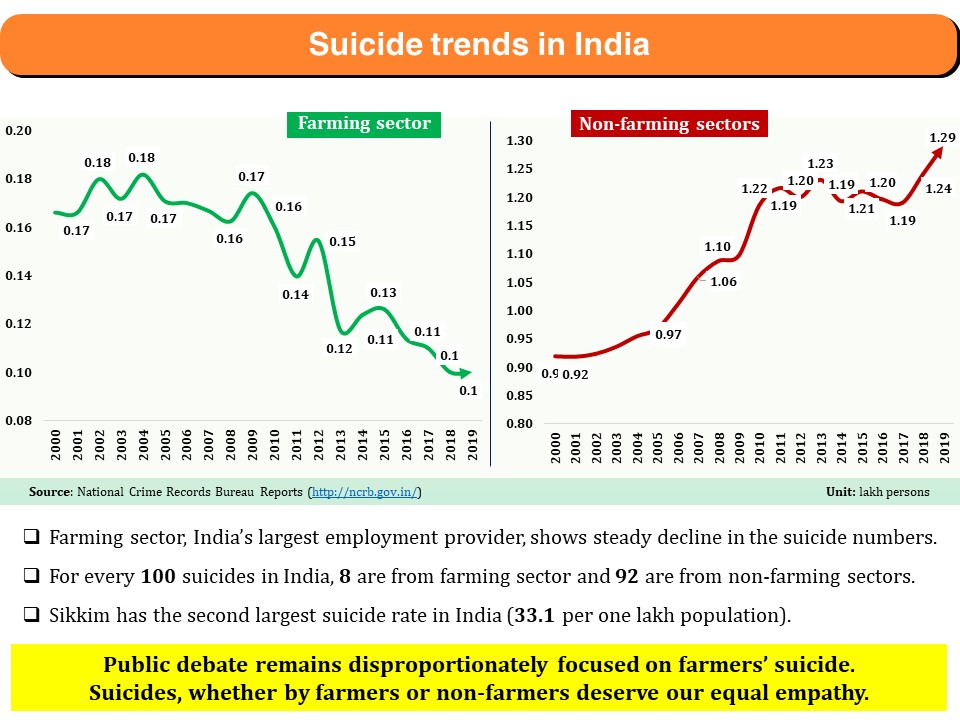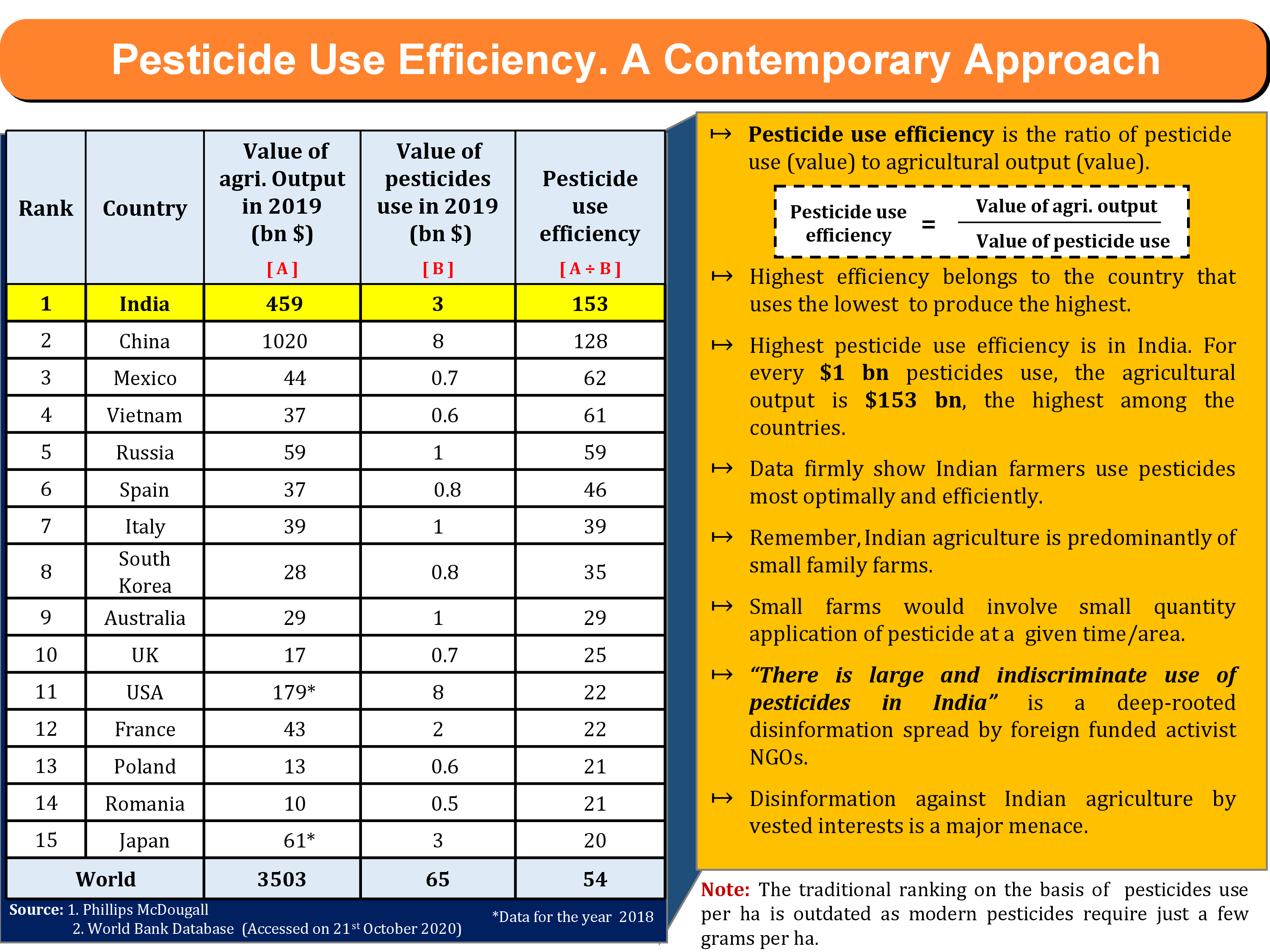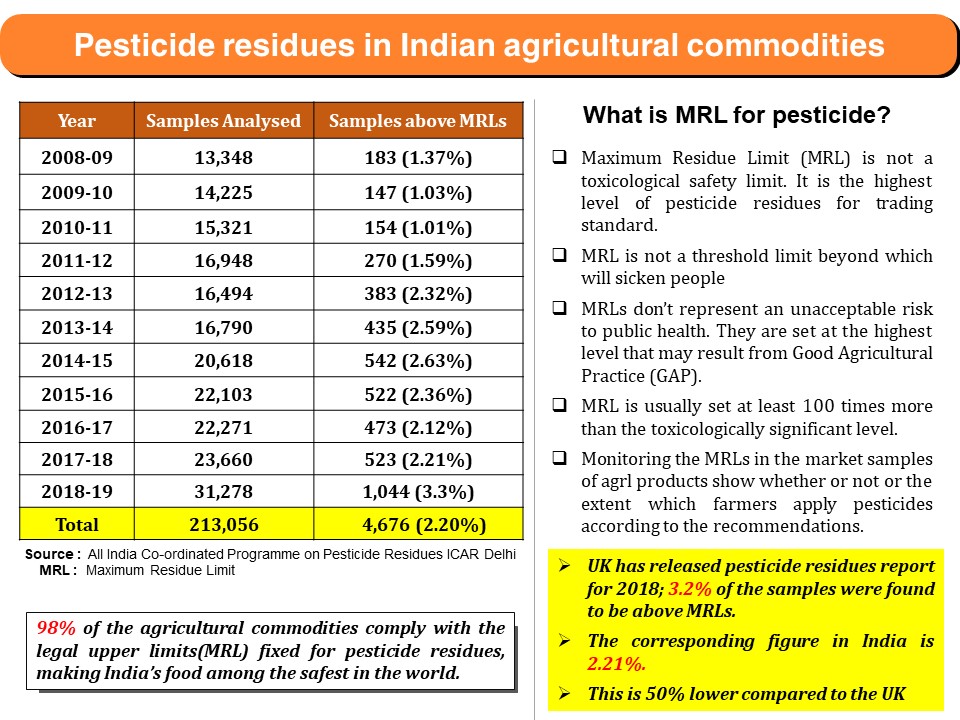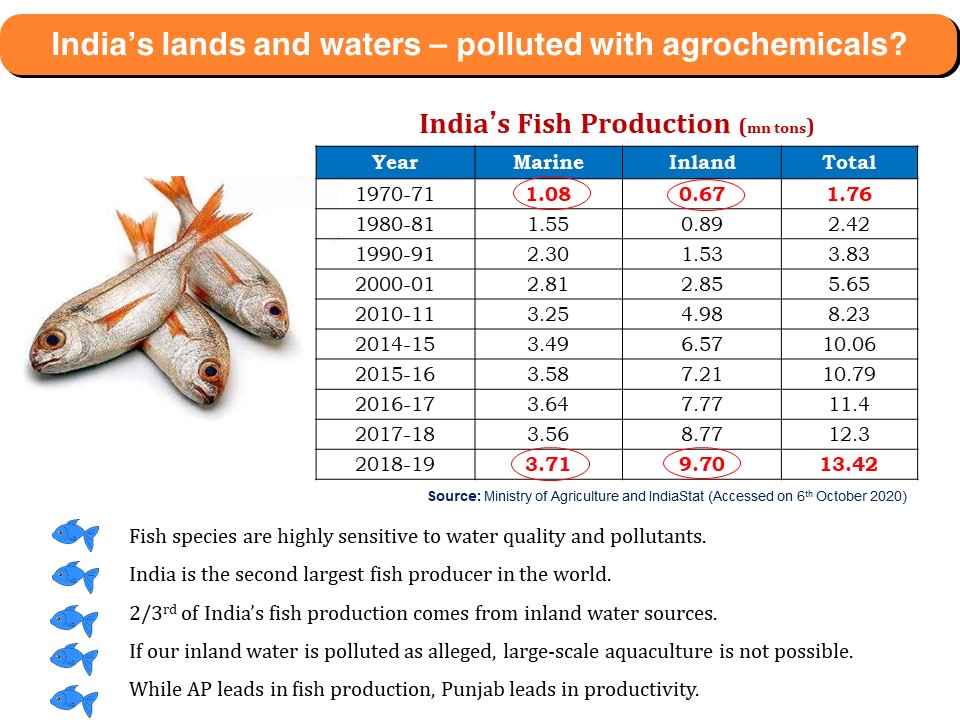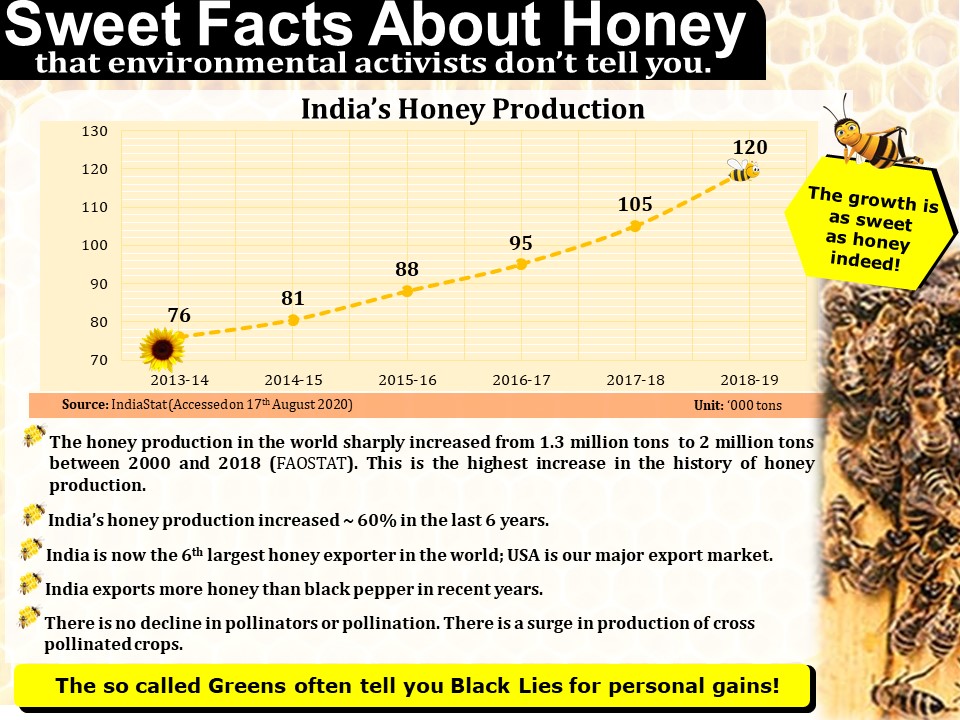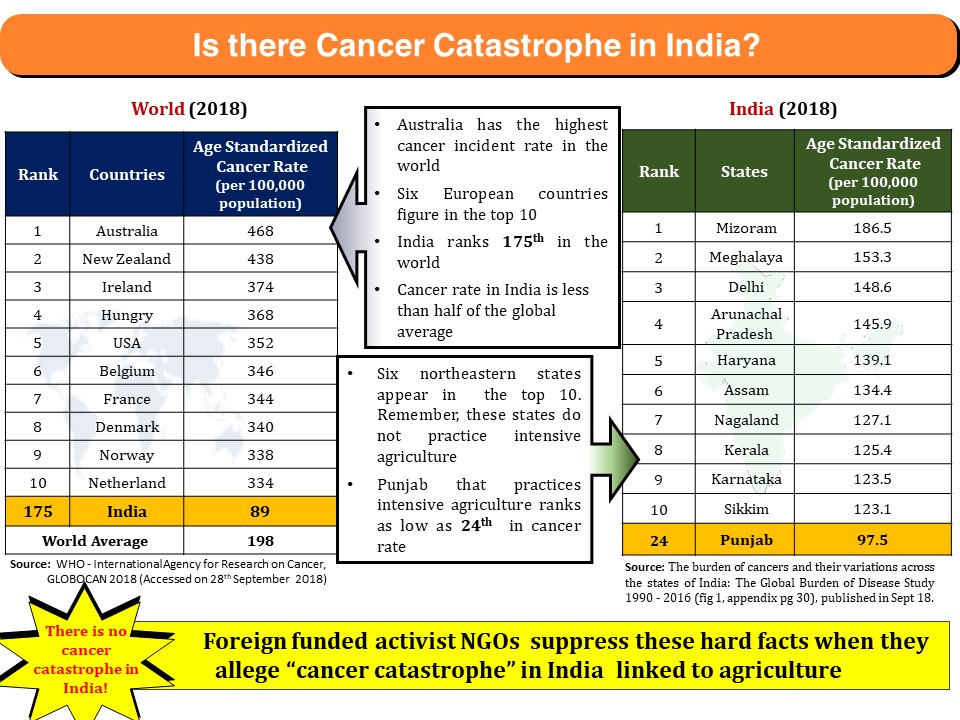Myths and Misconceptions About Indian Agriculture and Factual Reality
“Our biggest weakness is not realizing / utilizing the strength of Indian agriculture. India’s agri-input industry (seeds, fertilizers and pesticides) have played a significant role in making India a global leader in the field of agriculture”
-Rajju Shroff
Chairman
Centre for Environment & Agriculture
A myriad of misinformation and disinformation has relegated the Indian agriculture to a dark corner. No other sector remains as misrepresented and misunderstood as the Indian agriculture sector. Foreign funded environmental NGOs have played a malicious role in creating and sustaining most of the myths and misconceptions about Indian agriculture. Dispelling the deep-rooted myths and misconceptions about Indian agriculture and bringing to the fore the sunny side of Indian agriculture is the need of the hour. This data driven advocacy fact sheet addresses that long felt need.
Popular misconceptions about Indian Agriculture:
2. Indian agriculture is unable to feed the increasing population. WRONG
3. Indian agriculture’s growth has declined in recent years. We need a second Green Revolution. WRONG
4. Nearly 60% of Indian labour force is engaged in agriculture. WRONG
5. Indian agriculture is a gamble on monsoon. WRONG
6. Increasing CO2 in the atmosphere has adversely affected agricultural production in India. WRONG
7. Farmers’ suicides are rampant and on the increase in India. WRONG
8. Indian farmers use pesticides excessively and indiscriminately. WRONG
9. Indian agricultural commodities are heavily contaminated with pesticide residues. WRONG
10. Inland rivers and inland water systems are polluted with pesticides affecting aquatic life systems. WRONG
11. Pesticides use has adversely impacted honeybees and honey production in India. WRONG
12. There is cancer catastrophe in India. WRONG
What does USDA say about India’s Agricultural Policies?
Since the 1980s, Indian agriculture has undergone a shift in production as farmers have planted less area to food grains and more to high-value crops. This shift coincides with strong economic growth, which has boosted incomes and, in turn, expanded consumer demand for higher valued foods, such as vegetables, fruits, milk, and some meat products.
Yet, India’s agricultural policies continue to follow a Green Revolution strategy developed to achieve grain self-sufficiency in the 1960s.
India’s Agricultural Growth Propellers an analysis by
United States Department of Agriculture (USDA) Economic Research Service
-April 04, 2016

